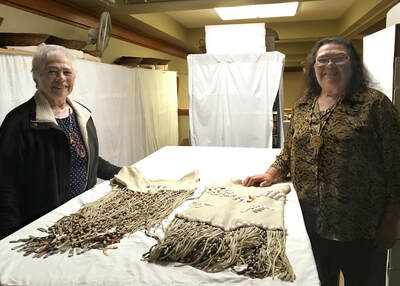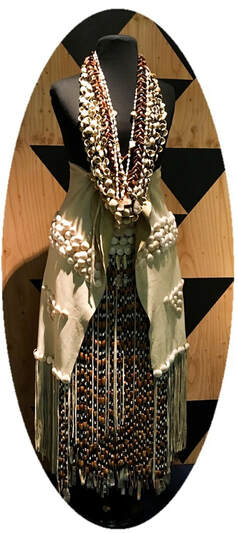 Leona Wilkinson and Cheryl Seidner, Wiyot tribal members, and participants in the Wiyot Women's Group who assisted in making the Wiyot dress dropping off the loan.
Leona Wilkinson and Cheryl Seidner, Wiyot tribal members, and participants in the Wiyot Women's Group who assisted in making the Wiyot dress dropping off the loan. This dress was made over the course of two years from 2004 to 2006 for Michelle Hernandez, a Wiyot Tribal member, as a part of a journey for the Wiyot Tribe of seeking, finding and completing a coming of age ceremony that hadn’t been done in decades. This dress is a small part of that ceremony and journey; it was lovingly made by community members and Michelle’s family for her coming of age ceremony. The Wiyot Tribe generously loaned this dress for the spring for this Women’s Ceremonial Dress exhibit. This dress is a connecting point of a revival of ceremony, of making and coming together as a tribal community. The dress here more than a finished project, it is made of deerskin, shells, beads and represents hours of prayer and artistry.
 The Wiyot Tribe's dress on display at the Clarke Museum
The Wiyot Tribe's dress on display at the Clarke Museum
Come visit the Clarke Historical Museum to see this dress in person, and the narrative of the story of this dress as representation of the continuing journey for ceremony for the Wiyot Tribe.

 RSS Feed
RSS Feed